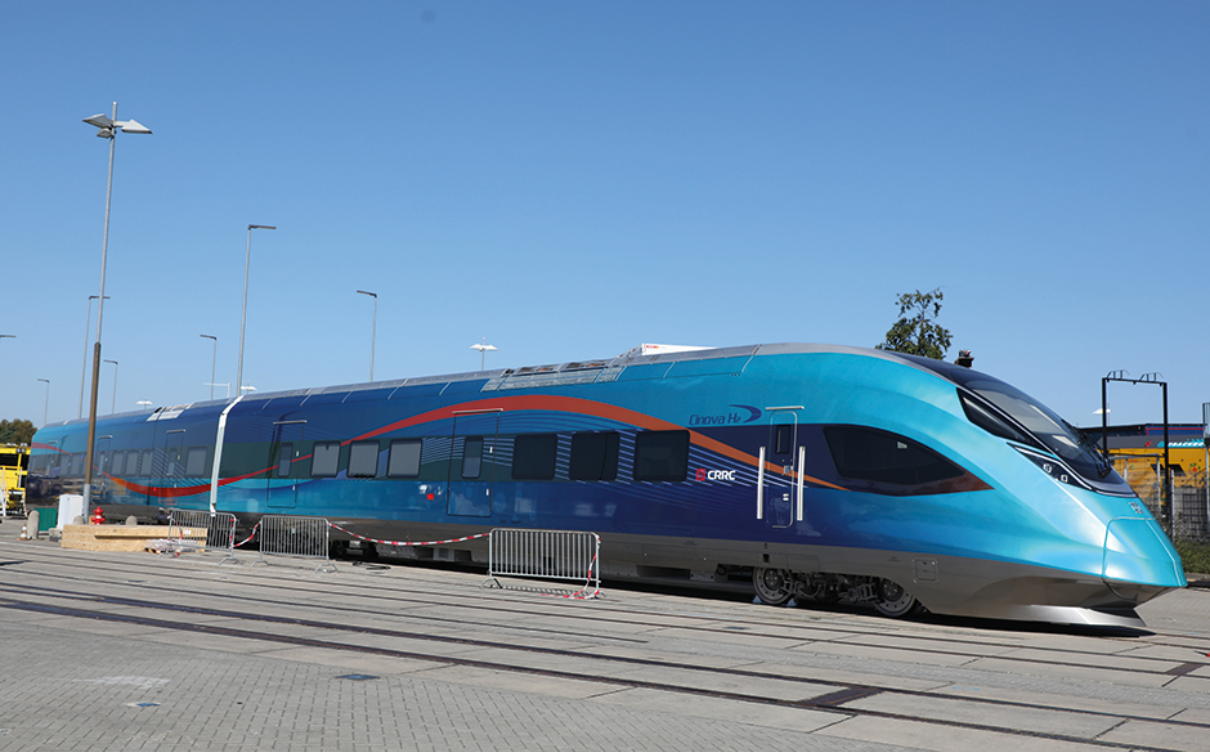Page content
Surprises in the outdoor display area
In the high-speed sector, the Velaro Egypt from Siemens Mobility and the ETR 1000 from Hitachi Rail were represented. Siemens Mobility has adapted the train for use under Egyptian climate conditions. The air conditioning systems and spoilers are designed to reduce the amount of sand being blown up. Cooling of the under-floor equipment has also been modified. Hitachi Rail has increased the recycling rate of the ETR 1000 by 2.7 per cent to 97.1 per cent while also reducing energy consumption through new components such as traction motors, further developed equipment and a new control system.
With the Cinova H2, CRRC from China surprisingly presented a regional hydrogen-powered train. It is energised by four fuel cells that are complemented with a battery. The stated range is 1,000 kilometres. CRRC has developed a robotic system for refuelling. In January 2022, Stadler Rail was awarded the contract for a tram-train vehicle family which had been jointly invited to tender by six VDV short-distance transport operators. The first vehicle to be supplied to Saarbahn has now been exhibited in Berlin. The vehicles can travel on both urban light rail networks and railway networks.
With its sheer length of 50 metres, the low-floor tram from Alstom for Berliner Verkehrsbetriebe (BVG) was impressive.
The innovative concept of the ARS, (Aachener Rail Shuttle), was on show for the first time. The concept, developed under the direction of RWTH Aachen University, consists of a chassis with the entire battery drive technology. The chassis can either be fitted with a body for passenger transport, as shown at the trade fair, or it can carry a 30-foot container. The ARS is designed to drive fully autonomously. It is equipped with extensive braking equipment from Knorr-Bremse. A surprise was the three-axle battery-powered shunting locomotive e6 – a product of leasing company Nexrail Lease (provider of finance), manufacturer IPE Rail-way Vehicles from Italy (engineering and construction) and German railway undertaking Havelländische Eisenbahn (hvle), which provided the idea and will be the first customer to use the e6. As a special feature, the battery charging technology is not installed on the locomotive itself, but at the charging station with a resulting significant weight saving for the locomotive.
Together with the Port of Duisburg (duisport), Vossloh Rolling Stock will test the use of hydrogen in locomotives. For this purpose, the demonstrator of the Modula BFC locomotive was presented. The locomotive has two fuel cells which are complemented by a battery. According to the manufacturer, the Modula BFC should be able to perform heavy shunting operations for one day.


